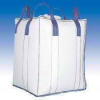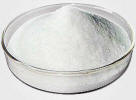| Anmol Chemicals is the pioneer manufacturers of Calcium Lactate, Pharmaceutical Excipients Food & Flavor chemicals in India. We offer Halal and Kosher Calcium Lactate made in an ISO9001, ISO22000 (FSSC22000) cGMP and GLP certified facility. Our group has several manufacturing facilities spread across the world, supported by toll manufacturers and representatives in UAE, Europe, Africa, USA, China and has several associated manufacturing facilities spread across India. All the Information on Physics, Chemistry, Applications, Uses and Technology on Manufacture of Calcium Lactate is in these pages. |
| The units have one or more of the certifications like FDA GMP, ISO 9001, ISO 22000, HACCP, REACH, Kosher & Halal |
Calcium Lactate SDS GHS, MSDS Sheet
Calcium Lactate Specifications
Calcium Lactate SDS GHS, MSDS Sheet, Material Safety Data Sheet
Section 1: Chemical Product and Company Identification
Product Name: Calcium Lactate
Synonym: L-Lactic acid calcium salt, Calcium L-lactate pentahydrate
Identified uses: Laboratory chemicals, Manufacture of substances
Chemical Formula: [CH3CH(OH)COO]2Ca · 5H2O
Molecular Weight: 308.29
CAS Number: 5743-47-5 or (814-80-2 anhydrous)
EINECS EC Code: 248-953-3
Supplier: As per the letterhead above.
Section 2: Hazards Identification
GHS, Globally Harmonized System Classification in accordance with 29 CFR 1910
Classification according to Regulation (EC) No 1272/2008
Not a hazardous substance or mixture according to Regulation (EC) No. 1272/2008.
This substance is not classified as dangerous according to Directive 67/548/EEC.
Labeling according to GHS & Regulation (EC) No 1272/2008
GHS Label Elements NONE |
Signal Word: None
Hazards not otherwise classified (HNOC):
May causes mild skin irritation.
May causes mild eye irritation.
Precautionary statements:
P261: Avoid breathing dust/fume/gas/mist/vapors/spray.
P262: Do not get in eyes, on skin, or on clothing.
P281: Use personal protective equipment as required.
P302+P352 - IF ON SKIN: Wash with plenty of soap and water.
P303+P361+P353 - IF ON SKIN (or hair): Remove/Take off immediately all contaminated clothing. Rinse skin with water/shower.
P304 + P340 - IF INHALED: Remove victim to fresh air and keep at rest in a position comfortable for breathing.
P305 + P351 + P338 - IF IN EYES: Rinse cautiously with water for several minutes. Remove contact lenses, if present and easy to do. Continue rinsing.
P337+313: If eye irritation persists get medical advice/attention.
OSHA Hazards: No known OSHA hazards.
Section 3: Composition and Information on Ingredients
Name: Calcium Lactate
CAS Number: 5743-47-5 or (814-80-2 anhydrous)
EINECS EC Code: 248-953-3
Section 4: First Aid Measures
Always seek medical advice after the first aid treatment.
Skin: Rinse with water. Soap may be used. Seek Medical Aid.
Eyes: Wash eyes with plenty of water for at least 15 minutes, lifting lids occasionally. Seek Medical Aid.
Inhalation: Remove to fresh air. If not breathing, give artificial respiration. If breathing is difficult, give oxygen.
Ingestion: If swallowed, induce vomiting immediately after giving two glasses of water. Never give anything by mouth to an unconscious person.
Notes to Physician: Treat symptomatically.
Section 5: Fire and Explosion Data
Flammability of the Product: Non-flammable.
Products of Combustion: Calcium oxide, Fumes and Oxides of carbon.
Fire Fighting Media and Instructions: Use water spray, alcohol-resistant foam, dry chemical or carbon dioxide.
Section 6: Accidental Release Measures
Small Spill: Use appropriate tools to put the spilled solid in a convenient waste disposal container. Finish cleaning by spreading water on the contaminated surface and dispose of according to legal requirements.
Large Spill: Do not inhale vapors, mist, or gas. Avoid dust formation. Use a shovel to put the material into a convenient waste disposal container. Finish cleaning by spreading water on the contaminated surface and allow to evacuate through the sanitary system. Be careful that the product is not present at a concentration level above TLV. Check TLV with local authorities.
Section 7: Handling and Storage
Precautions: Do not breathe dust. Keep away from incompatibles such as oxidizing agents, acids.
Storage: Keep container tightly closed. Keep container in a cool, well-ventilated area. Refrigerated storage recommended.
Section 8: Exposure Controls/Personal Protection
Engineering Controls: Use process enclosures, local exhaust ventilation, or other engineering controls to keep airborne levels below recommended exposure limits. If user operations generate dust, fume or mist, use ventilation to keep exposure to airborne contaminants below the exposure limit.
Personal Protection: Safety glasses. Lab coat. Dust respirator. Be sure to use an approved/certified respirator or equivalent Gloves.
Personal Protection in Case of a Large Spill: Splash goggles. Full suit. Dust respirator. Boots. Gloves. A self contained breathing apparatus should be used to avoid inhalation of the product. Suggested protective clothing might not be sufficient; consult a specialist BEFORE handling this product.
Section 9: Physical and Chemical Properties
Physical state and appearance: Solid white to off-white powder or granules.
Odor: Odorless.
Chemical Formula: [CH3CH(OH)COO]2Ca · 5H2O
Molecular Weight: 308.29
pH (5% soln/water): 6-8
Boiling Point: Not available.
Melting Point: 240C.
Solubility: Soluble in water.
Section 10: Stability and Reactivity Data
Stability: It is stable under cool condition.
Conditions of instability: Incompatible materials
Incompatibility with various substances: Heat, light, strong oxidizing agents, bases, amines, reducing agents, acids, acid anhydrides.
Polymerization: Will not occur.
Section 11: Toxicological Information
Toxicity to Animals: Not available.
Carcinogenic Effects: Not a reported carcinogen by IARC, NTP, ACGIH, OSHA.
Section 12: Ecological Information
Ecotoxicity: The product is not considered harmful to aquatic organisms or to cause long-term adverse effects in the environment. Not dangerous for the ozone layer.
BOD5 and COD: Not available.
This substance/mixture contains no components considered to be either persistent, bioaccumulative and toxic (PBT), or very persistent and very bioaccumulative (vPvB) at levels of 0.1% or higher.
Section 13: Disposal Considerations
Waste Disposal: Waste must be disposed of in accordance with federal, state and local environmental control regulations.
Section 14: Transport Information
DOT (US): Not dangerous goods
ADR/RID: Not dangerous goods
IMDG: Not dangerous goods
IATA: Not dangerous goods
Section 15: Other Regulatory Information
USA Regulations:
TSCA 12(b): Not applicable
SARA 313: Not applicable
SARA 311/312: Hazardous Categorization: None
Clean Water Act: Not applicable
Clean Air Act: Not applicable
OSHA Occupational Safety and Health Administration: Not applicable
CERCLA: Not applicable
California Proposition 65: This product does not contain any Proposition 65 chemicals.
HMIS (Perceived): Health Hazard: 1, Fire Hazard: 0, Reactivity: 0
NFPA (Perceived): Health: 1, Flammability: 0, Reactivity: 0
Canada WHMIS Hazard Class: Non-controlled
Listed on the Canadian DSL (Domestic Substances List) inventory.
Listed on Non-Domestic Substances List (NDSL)
Section 16 - Additional Information
Disclaimer:
***********************************
Our company provides this Calcium Lactate SDS information contained herein in good faith but makes no representation as to its comprehensiveness or accuracy. This MSDS sheet is intended only as a guide to the appropriate precautionary handling of the material by a properly trained person using this product. Individuals receiving the information must exercise their independent judgment in determining its appropriateness for a particular purpose.
************************************
Manufacturers
Anmol Chemicals
MUMBAI 400009, INDIA
TEL: (OFFICE) 91-22-23770100, 23726950, 23774610, 23723564. FAX: 91-22-23728264
e-mail: anmolc@mtnl.net.in

Exports to USA, Canada, UAE, Dubai, South Africa, Tanzania, Kenya, Nigeria, Egypt, Uganda, Turkey, Mexico, Brazil, Chile, Argentina, Europe Netherlands, Italy, Spain, Germany, Portugal, France, Malaysia, Indonesia, Thailand, Korea, Japan, etc.
Copyright and Usual Disclaimer is Applicable. 14 January, 2022




